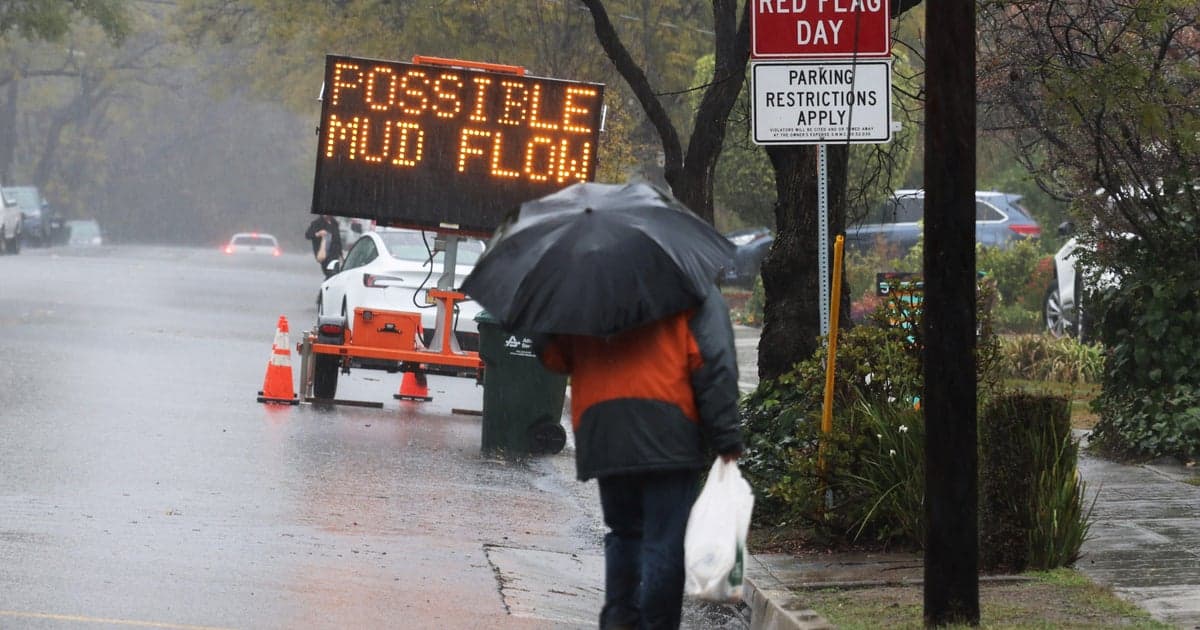Relentless Rain Floods California, Evacuation Orders and Health Risks
A powerful rainstorm battered California on Nov 13, 2025, prompting flash flood warnings and evacuation orders across multiple regions, according to CBS News. The deluge underscores growing climate driven extremes and raises urgent public health and equity concerns for displaced residents and stressed health services.
Listen to Article
Click play to generate audio

Emergency officials across California mobilized after a severe rainstorm prompted flash flood warnings and evacuation orders on Nov 13, 2025, CBS News reported. Roads became impassable in low lying and coastal areas, and communities already strained by housing shortages and previous wildfire damage faced acute threats from fast moving flood waters and debris flows.
The immediate health risks are stark. Flooding increases the danger of drowning and traumatic injury, interrupts emergency medical transport, and can contaminate drinking water systems. Sheltering and displacement create conditions that exacerbate chronic illnesses, complicate medication access, and raise the risk of communicable disease spread when crowded facilities operate under strain. Mental health impacts will ripple through affected neighborhoods as families cope with loss, uncertainty, and displacement.
The storm also exposed longstanding inequities in emergency response and resilience. Low income residents, people with limited English proficiency, older adults, people with disabilities and undocumented immigrants often face barriers to receiving timely evacuation information and to reaching safe shelter. Lack of personal vehicles and limited public transportation options make evacuation orders harder to follow for those without resources. Rural and tribal communities, which frequently have fewer local health services, face added challenges in accessing urgent care and long term recovery assistance.
Healthcare infrastructure encountered immediate pressures. Hospitals and clinics near flooded areas must balance surge capacity for acute injuries with continuity of care for patients reliant on dialysis, oxygen and other time sensitive services. Power outages and water contamination can force facility evacuations or diversion of ambulances. Public health departments must rapidly coordinate shelter medical services, vaccination clinics where needed and outreach to ensure continuity of care for vulnerable populations.
Policy choices shape how well communities weather such events. Decades of development in floodplains and on hillsides burned by wildfires increases exposure to runoff and debris flows. Aging stormwater systems and uneven investment in resilient infrastructure leave some neighborhoods more at risk. Federal, state and local emergency funds and insurance programs will determine how quickly families can return home and rebuild. Equitable disaster planning requires investing in community based warning systems, multilingual outreach and transportation assistance to ensure evacuation orders are actionable for everyone.
Scientists link the increasing frequency of intense storms to a warming atmosphere that holds more moisture, a trend that makes episodes like this more likely. Officials and policymakers must translate that reality into preventive action, prioritizing upgrades to levees and drainage, protecting natural floodplains, and expanding shelter and health service capacity in underserved areas.
As the waters recede, the work will shift from immediate rescue to ensuring safe recovery. That means accessible shelters, rapid public health outreach, attention to mold and waterborne hazards, and policy changes that address the social and infrastructural vulnerabilities that turn storms into human tragedies. Responding with equity and preparedness will determine whether this storm is remembered as a brief emergency or a catalyst for more resilient communities.

